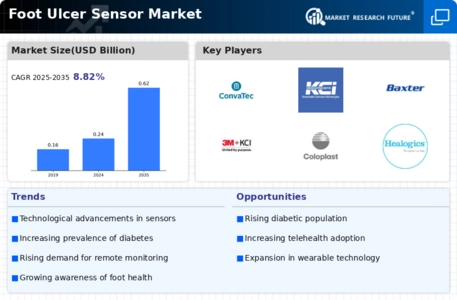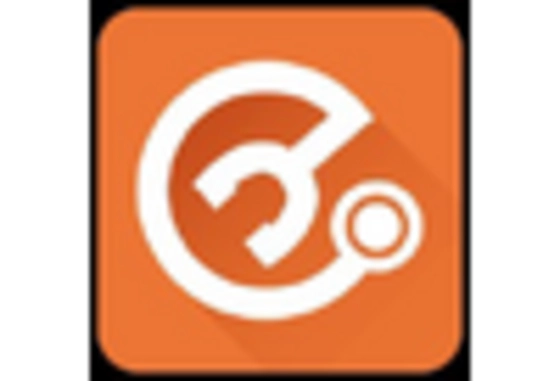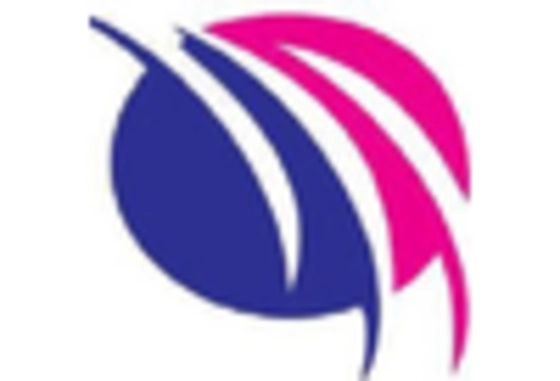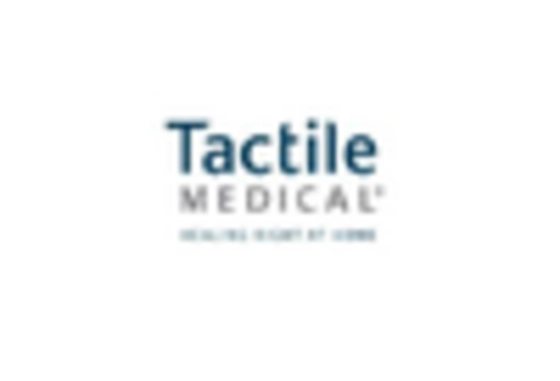Growing Geriatric Population
The Foot Ulcer Sensor Market is also being driven by the growing geriatric population, which is more susceptible to foot ulcers due to age-related health issues. As the global population ages, the prevalence of conditions such as peripheral neuropathy and vascular diseases increases, heightening the risk of foot ulcers. According to demographic studies, the number of individuals aged 65 and older is expected to reach 1.5 billion by 2050. This demographic shift is likely to create a substantial demand for foot ulcer monitoring solutions, thereby propelling the Foot Ulcer Sensor Market. Healthcare providers are increasingly recognizing the need for specialized tools to manage foot health in older adults.
Increased Focus on Preventive Healthcare
The Foot Ulcer Sensor Market is benefiting from a heightened focus on preventive healthcare measures. As healthcare systems worldwide shift towards proactive management of chronic conditions, the demand for early detection tools, such as foot ulcer sensors, is on the rise. Preventive strategies not only improve patient quality of life but also reduce the financial burden on healthcare systems. The market is projected to grow as healthcare providers increasingly adopt these technologies to monitor at-risk patients. This trend aligns with broader healthcare initiatives aimed at reducing hospital admissions and improving patient outcomes, thereby fostering growth within the Foot Ulcer Sensor Market.
Supportive Government Initiatives and Funding
The Foot Ulcer Sensor Market is positively impacted by supportive government initiatives and funding aimed at improving diabetic care. Various health authorities are implementing programs to promote research and development in diabetes management technologies, including foot ulcer sensors. These initiatives often include grants and subsidies for companies developing innovative solutions. For instance, government funding for diabetes-related healthcare technologies has seen a marked increase, which is likely to stimulate advancements in the Foot Ulcer Sensor Market. Such support not only encourages innovation but also facilitates wider adoption of these critical monitoring tools in clinical settings.
Technological Advancements in Sensor Technology
The Foot Ulcer Sensor Market is experiencing a surge in technological advancements that enhance the accuracy and efficiency of foot ulcer detection. Innovations such as smart sensors equipped with real-time monitoring capabilities are becoming increasingly prevalent. These devices can provide continuous data on pressure, temperature, and moisture levels, which are critical indicators for ulcer formation. According to recent estimates, the integration of advanced sensor technology could potentially reduce the incidence of foot ulcers by up to 30%. This trend not only improves patient outcomes but also reduces healthcare costs associated with ulcer treatment. As a result, the Foot Ulcer Sensor Market is likely to witness significant growth driven by these technological improvements.
Rising Incidence of Diabetes and Related Complications
The Foot Ulcer Sensor Market is significantly influenced by the rising incidence of diabetes and its associated complications. With the World Health Organization reporting that diabetes prevalence has nearly doubled since 1980, the demand for effective monitoring solutions has escalated. Foot ulcers are a common complication among diabetic patients, leading to severe health issues if not managed properly. The increasing number of diabetes cases is expected to drive the Foot Ulcer Sensor Market, as healthcare providers seek innovative solutions to prevent and manage foot ulcers. This growing patient population necessitates the development and adoption of advanced sensor technologies, thereby propelling market growth.


















Leave a Comment